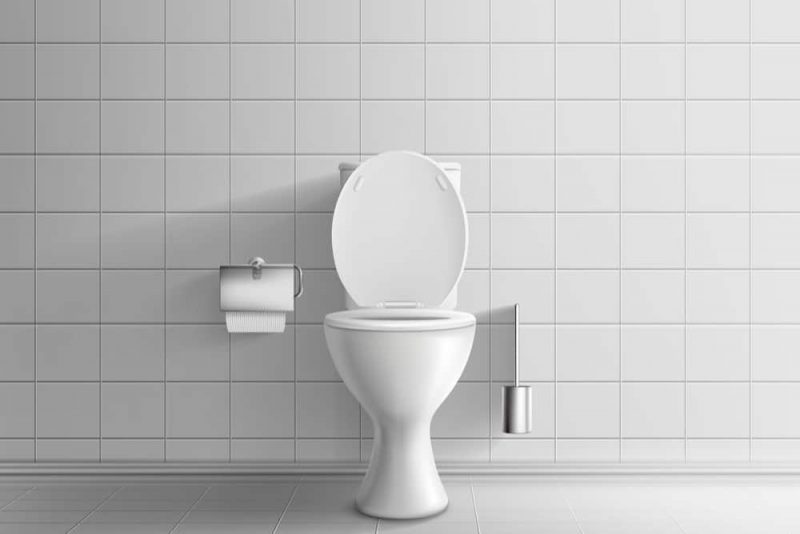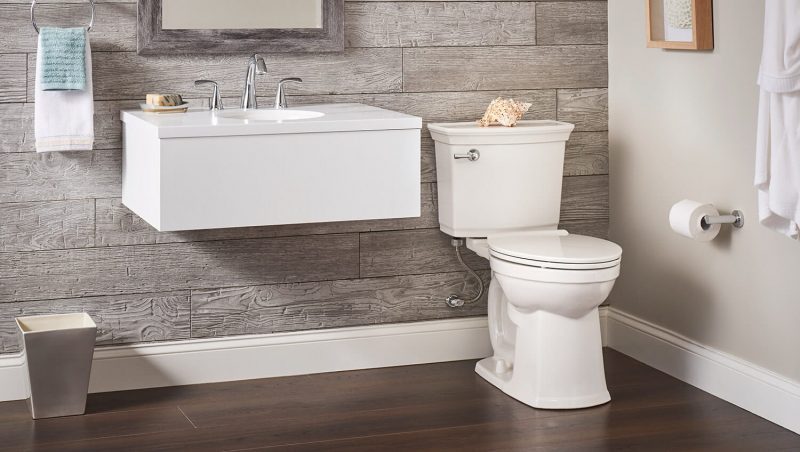A toilet and a shower are required in any “modern” home. However, finding a large enough area is not always possible, so the owner of an apartment or small house must be resourceful and make the necessary decisions to install the necessary pipes.
To create a functional and appealing toilet, it is critical to accurately calculate the space that the plumbing and other elements will require, even if the size of the toilet itself is adequate for the space available in the bathroom.
The dimensions and weight of the toilet being installed are critical. So, knowing how heavy is a toilet and resources play a part. Continue reading to learn the truth about the weight of a toilet.

How Heavy Is a Toilet?
A standard toilet weighs between 60 and 120 pounds (27 and 55 kilograms). However, the weight of a toilet is affected by its design and material. Consumers frequently inquire about how much a toilet seat will weigh.
The chairs could be made out of a wide range of materials. Toilet seats come in oblong and round shapes, and minor toilet seat shifting can result in cracks, creeking, and other issues. So, when shopping for toilets, be cautious and consider the seat weight.
The average weight of a Toilet
A toilet’s weight can vary widely depending on the manufacturer, model, material, and finish. Check out the typical weight of a toilet for unoccupied commodes without a seat, lid, or water.
After installing a toilet, your load may increase by 10–20 kg, depending on the brand and model. Keep in mind that if you remove the seat and lid, the toilet may weigh less. To begin with, a linked toilet is more portable because its components are smaller and lighter.
One-piece toilet weight
A one-piece toilet weighs around 100 pounds, whereas a two-piece one typically weighs around 50 pounds (bowl or tank). Since the bowl and tank are joined as a single unit, it is easy to see why the one-piece is heavier.
Two-piece toilet weight
Two-piece toilets have a bowl and a tank that are physically separated from one another. A two-piece toilet should weigh between 70 and 100 pounds altogether. On the other hand, the toilet bowl will weigh somewhere between 50 and 60 pounds on its own. The ideal weight for the tank is 25–40 pounds.
Floating toilet weight
The toilet mounted on the wall, or “floats,” is also called a “floating” toilet. Although this toilet style is more frequent in public buildings, it is still a good option for homes with limited space in the bathroom. Lightweight (50-80 pounds) construction is necessary since they “hang” from a frame placed on the wall.
Smart toilet weight
Several modern toilets have done away with the traditional tank for space savings. Most of the leading smart toilet models today weigh between 90 and 120 pounds, which is heavier than the usual one-piece or conventional two-piece toilet.
Portable toilet weight
Surprisingly, portable toilets are the lightest and most compact types on the market. They pack down little, making them ideal for road trips and camping. The most reliable lightweight toilets weigh about 10–15 pounds (5-8 kg). The best portable toilets are typically plastic, making them far more lightweight than porcelain commodes.
Some Factors That Influence Toilet Weight
Due to the similarities in design and function, the general public tends to assume that all toilets have the same weight. In reality, the total weight of a toilet is affected by several variables. The following are some of these elements:
Size and design
Size plays a vital role when considering how much a toilet weighs. Miniature toilets that take up less space are available for bathrooms with limited space. Portable restrooms are lightweight. For the same level of comfort as standard toilets, however, a height-adjustable model will require a significant increase in toilet size. A smaller, lighter tank option is also available for some models.
One or Two-piece Toilets
Choosing between a one-piece and a two-piece design significantly contributes to a toilet’s overall weight. The bowl and tank of a one-piece toilet are integrated into one unit, while those of a two-piece model are kept separately.
Materials
Porcelain, a ceramic form produced by fusing clay with mineral-like quartz or silica, is one of the most frequent materials used to construct toilets. Porcelain urinals are fired in a kiln after being shaped in a mold. Toilets made of porcelain are widely used because of the material’s durability and water resistance. Stainless steel, resin, and plastic are alternative, less frequent materials used to make toilets.
Toilet Brands
Toilets can be found from a wide variety of manufacturers. On the other hand, not all toilets are made the same way. It is well known that the total weight of the toilet can change due to these various procedures. You’d soon learn that one-piece toilets of different brands can vary greatly in weight from each other. Maybe one is more lightweight than the other.

Do Toilets Have a Weight Limit?
You can tell how much weight a toilet seat can hold by looking at the weight limit, which varies between models. Both wall-mounted and floor-mounted loos are included, and toilets installed on the floor may support up to 1000 pounds. Two of the biggest factors are where they’re made and what materials they’re made of.
Most major manufacturers offer standard commodes in size and design, so they can all support the same loads. However, wall-mounted commodes can withstand loads of up to 500 pounds. It was suggested that people who are overweight should look into purchasing floor-mounted toilets because they can support more weight.
Conclusion
Although it’s not the heaviest fixture in the bathroom, the toilet requires special care when being moved. The bulky design and heavy weight of this apparatus make it a nuisance to move around. As a result, it’s helpful to have companions and mobile add-ons to aid in the effort. We hope after reading our guide, you will know how heavy is a toilet and could make a sound decision on which toilet to choose for yourself.